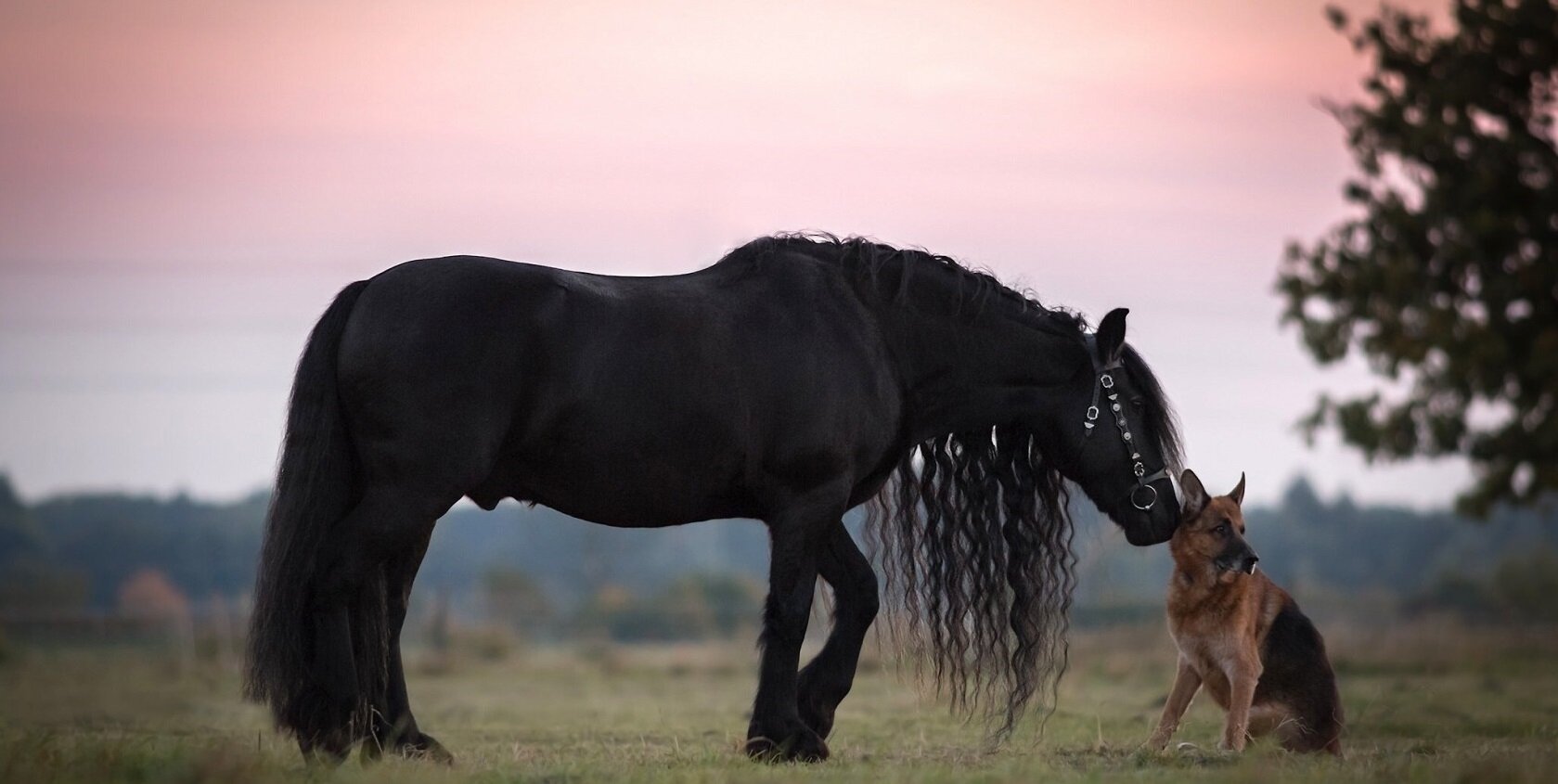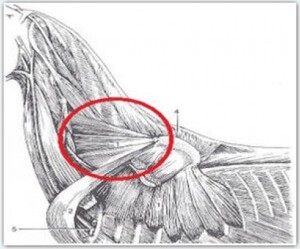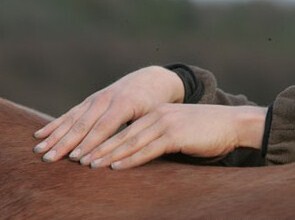Remember the last time you rolled out of bed in the morning feeling like you must have slept with your neck contorted like a noodle?
The lingering stiffness lasts all day, making simple things like dressing and driving a pain. Now, imagine you're a horse with neck pain--consider how uncomfortable it would be to move in a frame, on the bit, to flex and bend and be expressive in your gaits, while battling an ache that just doesn't go away.
We’ve all seen horses throwing their heads up when our hand approaches. This behaviour is commonly referred to as being “head shy”. It’s often assumed that the horse has not been handled enough, or possibly too roughly. Or maybe he’s just having a bad day, has not yet forgotten his last dose of bad-tasting dewormer, or simply doesn’t want to have anything to do with today’s training plan.
Or, it could be he has a headache.
A multitude of factors can bring on a headache. Those traditionally considered in veterinary medicine include meningitis, an abscess or tumor, or an accident leading to a skull injury. With accidents, it’s important to keep in mind that you may not even be aware that one has happened. The horse may have fallen, been kicked by another horse, beaten over the head by a previous owner, got hung up under a paddock rail or hit her head on the roof of a trailer, without your ever knowing.
A classic cause for equine headaches is impaired movement in the first neck vertebra (“atlas”). This easily happens when the horse pulls back. Chronically tight poll muscles due to training issues or other types of stress can also be the culprit, as can jaw, tooth and sinus problems.
Just like people, horses may experience headaches of varying severity. If the pain is mild it can be easily overlooked. The condition can be intermittent or constant, and to make things even more difficult, the personality of a horse can greatly influence how clearly he expresses discomfort.
All the symptoms are unspecific, meaning they could be caused by issues other than headaches.
But one or more of the following behaviors is good reason to suspect headache:
• The horse does not like to be touched on the head and/or poll
• Over-reacts to movements happening in his surroundings or in proximity of his head
• Pins his ears back when approached
• Won’t let you easily put a flymask on, or be haltered or bridled
• Has a squinty or worried look in or around the eyes
• Blinks frequently, particularly when moving
• Tends to bump into things
• Shows inconsistent performance/ trainability
• Exhibits irritability, which in the case of a “moody mare” may also be connected with her cycle
Treatment options
When people get headaches, they usually take painkillers, either prescribed or OTC, to lessen the discomfort. But there are a number of complementary modalities that may be able to help equine (and human) sufferers.
Stimulating particular acupuncture points on the body can address headaches by reducing muscle tension, inflammatory responses and pain. It promotes proper blood circulation, regulating blood vessel dilation, and can also balance hormonal issues. I personally respond to acupuncture and bowen within an hour.
• Make sure all your horse’s gear fits right. A too-short crown piece or brow band can trigger headaches. A nose band so tight that you can’t slip a couple of fingers between the leather piece and the skin, is just asking for jaw problems that can also end up causing headaches.
• Even blankets that seem to fit the horse well tend to shift, and may apply pressure around the shoulder, impairing circulation, and causing muscle tightness that can radiate into the poll and head area. Again, what is convenient for us may not be the best for our horse, and leaving blankets on for most of a 24-hour period is a potential culprit.
Other Poll/ neck pain can result from a number of factors, including trauma, muscle injury, fracture or displacement of a vertebra, or osteoarthritis.
Some of the more typical clinical signs horses with a neck problem might present include stiffness, muscle atrophy, patchy sweating, shortened forelimb stride, forelimb lameness, and abnormal head carriage. There are also cases of horses getting their necks "stuck" in a fixed, low position, unable to move and exhibiting considerable distress. This can be "released" through manipulation.
THE POLL It is common for horses to lose the range of movement available at the poll. This is especially common in older horses, where the joint between the first vertebrae and the head becomes arthritic and stiff.
This joint is only able to perform a relatively small ‘nodding’ type movement, so a slight restriction to this movement can lead to big problem. Meaning he has to compensate by lowering or raising his entire neck rather than simply nodding at the poll.
Horses often develop a nose poking posture due to arthritic changes, meaning they can no longer flex their head inwards towards their chest. This is also common in stallions, who often adopt a similar head posture when serving mares or as part of their ‘presence’. If postures are maintained for long periods it can lead to the muscles and soft tissue shortening, which in turn restricts movement, again reducing the amount of flexion at the poll.
Less common is a loss of movement the other way, i.e. not able to poke its nose out. Although this restriction can occur in horses that ‘wind suck’, as they over work the muscles on the under side of their necks, which can in turn get tight.
THE NECK Side flexion or bending of the neck seems to be the most common movement to get stiff. The seven vertebrae of the neck all have key roles to play, in enabling the neck to bend sideways.
The majority of side flexion, which occurs in combination with rotation, takes place at the 3rd, 4th and 5th vertebrae. If the horse gets stiff in this area he will try to trick by tilting his head or lunging from the base of his neck, in order to reach all the way around (as in turning to touch the rider’s toe). The lower border of the neck may develop a thickened appearance, especially through the middle section as this area is not working normally
Unsteady or uneven bridle contact and head carriage, choppy flat paces, poor lengthened strides, not breathing correctly, kicking out at leg aids, one sided, difficulty in producing a round outline, raising the back, or flexing at the poll.
Unduly sweating or puffing, front end stumbling, hind legs giving out occasionally, poor or tense lateral work, throws head up in transitions, generally flat or dull, lacks straightness and reach in front and engagement behind, goes wide behind when lengthening and collecting or falls in or out, head tilting, unable to work long round and low, constantly stiff after work, uncharacteristic tension in all work.
Ears back, tail swishing and hollow backed during transitions up and down.
Head flick, has poor self carriage, falling in on corners, runs into canter, etc.
Acupuncture / Myo-Fascial Release / Laser Therapy/ Osteopathic Techniques
The effects of AMRT therapy cannot be explained in terms of a single mechanism, but rather a series of interactions between the nervous system, the endocrine system and the immune system.
Anatomical examination of classical acupuncture points has shown that most of the Acupuncture points are associated with certain anatomic structures of the nervous system.
Acupuncture needling causes micro trauma that in turn causes a local inflammatory effect. This inflammatory effect results in an increased local tissue immune response, improved local tissue blood flow, and muscle and tissue relaxation.
Some of theses points are known as “trigger points”. AMRT works over the same trigger points. These are tender areas found in skeletal muscle associated with a tight band or knot in the muscle.
If you feel your horse has head/ neck issues contact Nash for a session on 021 2654522





